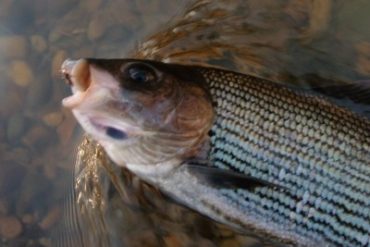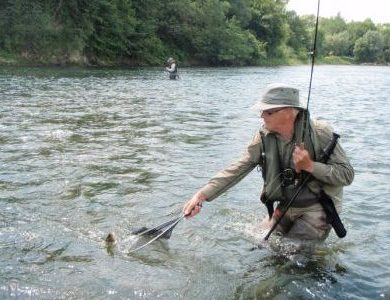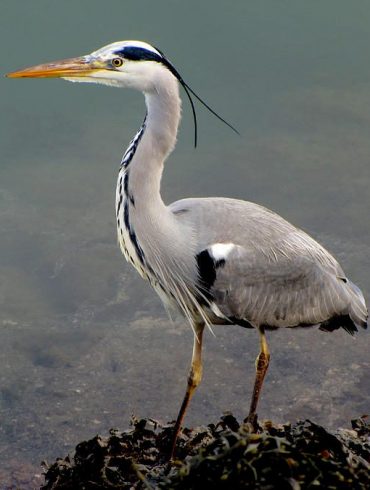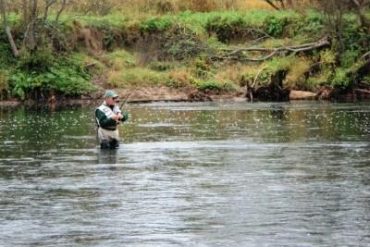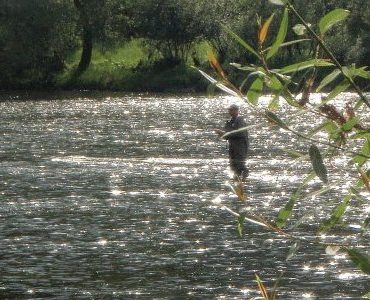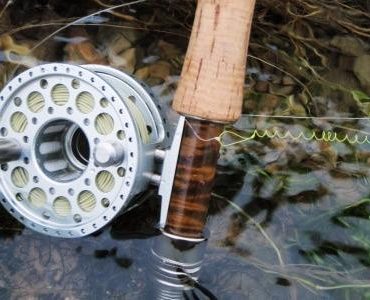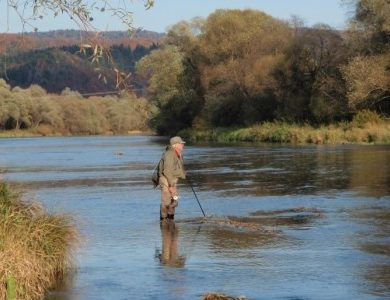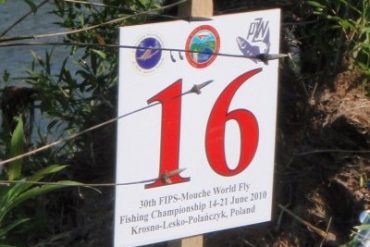Dr. Way Yin has had a hand in designing a good chunk of the Spey tackle on the market (designing for both Scott Fly Rods and Scientific Anglers) and his reflections on the extreme growth of Spey casting--and how lucky we are to have our modern tackle--are well worth the listen. Read More
A British angler is opening up the gateway for anglers to fish with fly and lures for the world class, record-breaking sport fish of the Amazon Rainforest. Read More
We anglers are some of the nicest, most helpful and cheeriest people you could ever wish to meet by the waterside. Well most of us anyway! Once in a while one person stands head and shoulders above us all. Sadly, a few years ago we lost that character. Read More
Mark Richens just bought legendary rodmaker Thomas & Thomas, rescuing it from what has been a fairly public decline. But with a background in successfully managing start-ups, an appreciation for the importance of keeping the racks full, and a hearty sense of the company's history, the future is obviously bright. Read More
I just got back from my first long-awaited trip to Cuba to sample the flats fishing in the Jardines de la Reina region, leading a group of UK anglers in conjunction with the Bonefish & Tarpon Trust (BTT). Read More
A Winter Approach On a trout and grayling river, from November through to the rawness of late winter, you never... Read More
World Championship Jeremy Lucas returns with his popular series about the leading edge of fly fishing development and what we... Read More
Grey Heron (Ardea cinerea) is not a common fly tying material these days explains Paul Davis, mainly thanks to it being a protected species and therefore not commercially available. But many old patterns prescribe its use and a dead bird can provide useful salvage material! Read More
Once in a while something comes across the editors desk here at Fish&Fly that really makes my day. Today my fishing friends it is a trailer for a fishing video. Not much new in that you may say BUT this is homegrown UK talent at last catching up to the USA. I am excited and so should you be. Read More
The Fieldsports Channel visits the Arundell Arms in Devon and has a go at catching what they dub the "Clotted Cream MacNab" of a salmon, sea trout, brown trout and a bass on the fly. Read More
Tom Pero, former editor of Fish&Fly Magazine, and Richard Hewitt, owner of FishandFly.com, discuss the news of the merger between their companies back at the end of 2008, what this meant for subscribers at the time, and the editorial direction of the new venture. What podcast would be complete without red, purple, even yellow bikinis. Intrigued? Stay tuned.
Read More
Fly Fishing guide, instructor and author Jeremy Lucas notes the continued rise in interest in fishing for grayling this winter... Read More
Leader-to-hand Jeremy Lucas reports on more cutting-edge developments bred from the world of competitive flyfishing. The French Leader technique involves... Read More
Accuracy Rivers all over Britain have been steadily falling this spring. Here on Eden we have had more than six... Read More
Stephen Cheetham searches for his roots this month and comes up with a fly fishing ancestor that dates back to the late 16th century with a literary background and plenty of fishing tips and fly dressings! Read More
Regular readers know that I have been fishing a lot with what I term 'leader-to-hand' in recent years. Indeed, other than on small rivers, I very seldom use fly line at all any more. Read More
Damsel flies usually appear between May to August when the nymphs can often provoke a rise as they swim towards any bank side vegetation to emerge as an adult. During the early part of the season the immature nymphs will be deeper in the water amongst the weed, well camouflaged from their predators. This is where the addition of a gold bead helps to get the fly a bit deeper and the glint of the gold head can act as an attractor. Read More
Tim Pommer is the chief product developer and head lab rat at Scientific Anglers. He's also a musky expert and the guy who did most of the quality control testing on SA's popular Sharkskin fly line. Ever wondered just how "scientific" the fly fishing companies really are? Tune in to find out. Read More
This is your chance to join author, qualified fly fishing instructor and guide Jeremy Lucas on his beloved San River... Read More
Observations from the World Championship It was immensely edifying this year to be able to observe the World Championship, on... Read More
Spring on Eden “You have to be in the right place at the right time” says Jeremy Lucas talking about... Read More

